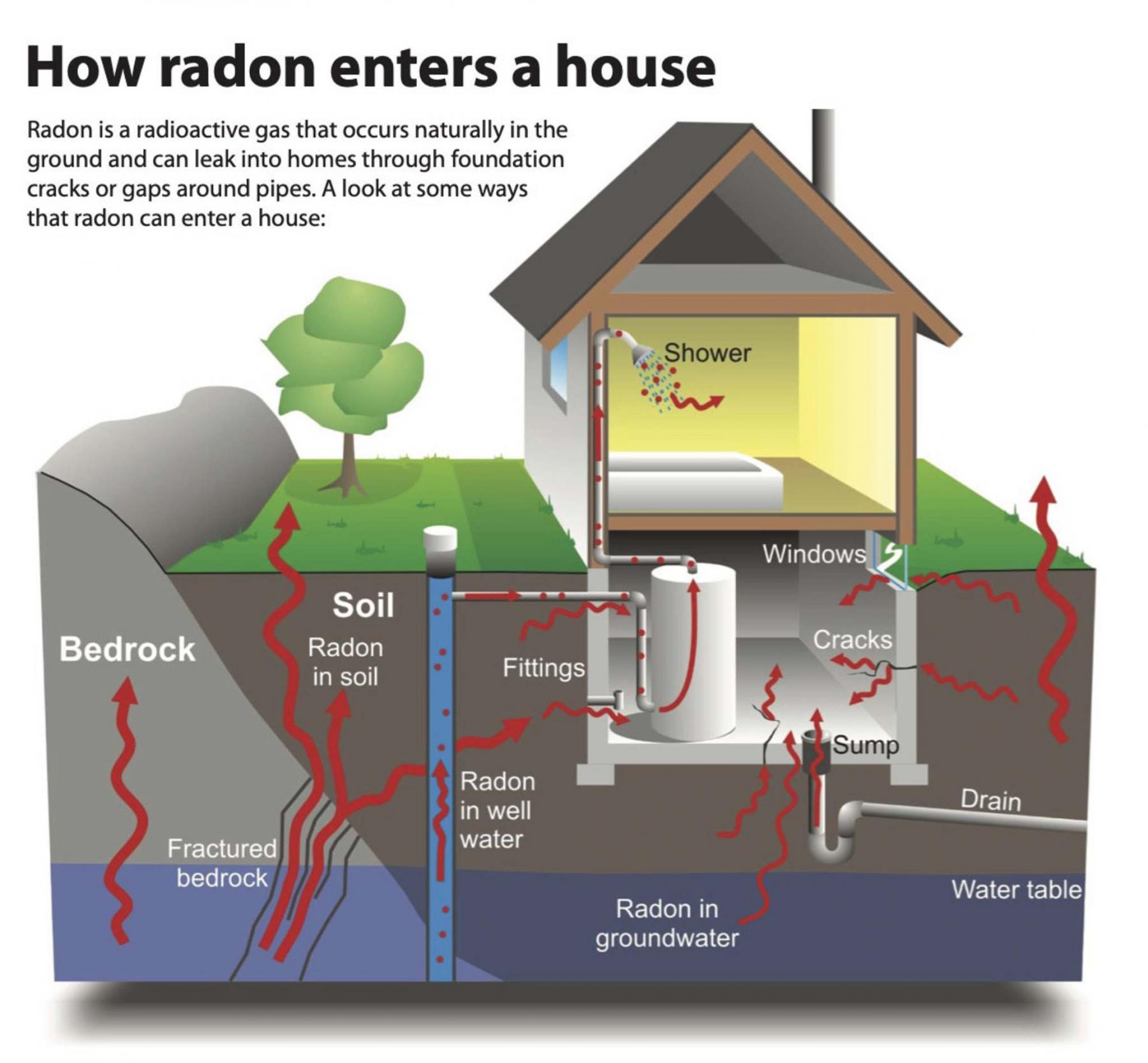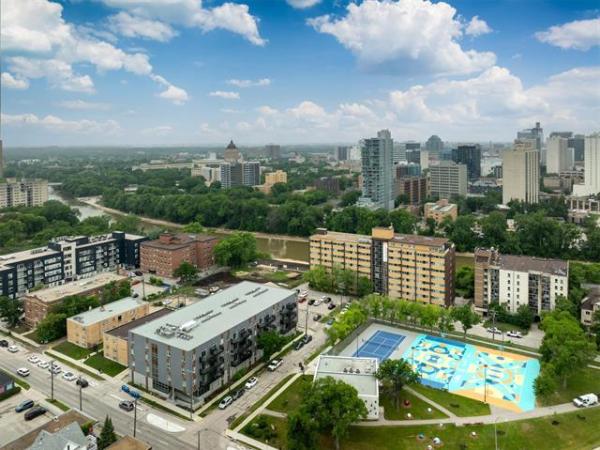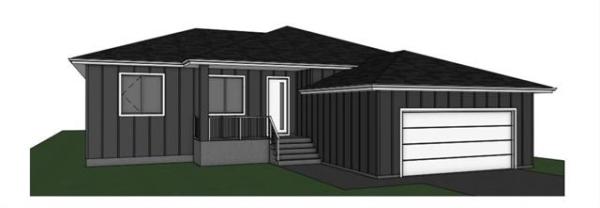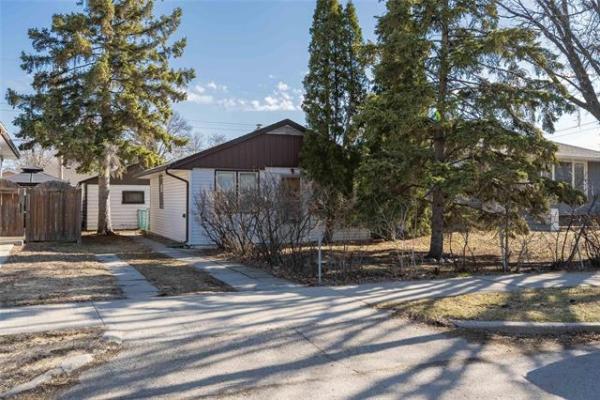Question — Earlier this year, I received a postcard in the mail from the federal government explaining the dangers of Radon gas and suggesting doing a home test. I ordered a test kit from a company in Saskatchewan. I followed the directions carefully and placed the test on the top of a wardrobe on the main floor in early May. I sent it off to AccuStar Labs in mid-August after 90 days of testing.
I just received the result of 229 Bq/m3 and it was suggested I should consider some remediation. My home is a 700 square-foot bungalow, built around 1927 and located in the West End. My basement is well insulated and partially finished. What should I be considering for remediation and about what could the cost be?
Thank you for your educational column and your time.
Lindsay
ANSWER — Radon remediation may be considered for a home with high levels, but other less costly options should be attempted first, to see if they are effective. Additional testing should be done and if levels remain above Health Canada guidelines, then contacting a licensed remediation technician for installation of a radon remediation system should be considered.
Radon is an invisible and normally undetected radioactive gas that is naturally emitted from our soil due to decaying radioactive minerals within the soil. Like many radioactive materials, it has been linked to cancer and is considered a major health safety hazard, in high enough concentrations. It normally enters our homes from the soil below the home, either through gaps or openings in the concrete floor slab or soil in the crawlspace. There is no way to determine whether this will be an issue when building a home, or explanation why some homes have higher levels than others, even in the same vicinity of one another. For this reason, all new homes built have roughed-in radon remediation pipes installed in the basement floor slab.
Testing for radon in a home is quite easy, but does require a period of at least three months to accurately gather enough data for a proper assessment. A radon test kit, like the one you have just used, can be purchased from a supplier or laboratory and easily set up in the normal living space of your home. This requires recording the date the tester is opened up, placing it in a location where it will not be disturbed or touched for the duration of the testing period, and recording the date it is sealed and removed. Once testing is complete, it can be mailed to a lab for analysis and the results sent shortly after that time. For more detailed information, Health Canada has written an excellent online pamphlet entitled Guide for Radon Measurements in Residential Dwellings, available on their website.
The current guideline for acceptable radon levels within a Canadian home is 200 Bq/m3, which is just below the reading from your recent test. Readings below this level are considered to be normal and above 600 are considered to be more of an imminent concern. Health Canada recommends that "taking steps to reduce the radon level within two years, for results between 200 and 600 Bq/m3." Above 600 Bq/m3, remediation should be done within a year. This is the likely reason for the recommendations from the lab that did your analysis.
Since your current testing has revealed a radon level slightly above the recommended guidelines, further testing should be done before spending the money on a complete remediation system. Since you have followed proper protocols, there is no reason to doubt the accuracy of your test results, but there are some issues that could affect the readings. It is recommended to do the testing, if possible, in the heating season. That is because in the summer and transition seasons, doors and windows may frequently be opened and closed. That natural ventilation could dramatically affect the radon gas concentrations in your home. Since you completed the testing in mid-August, I expect that you installed the tester mid-May, just when we normally turn off our furnaces and start opening up the windows in our homes. While this may have reduced the radon levels in the home, it is still not the ideal time to do the testing, so plans for further evaluation this winter would be a good idea.
Building scientists have discovered that the primary location for radon gas intrusion into a home is through the concrete basement floor slab, from the sub-slab soil. Because of this, all homes built in the last half century have polyethylene sheathing installed below the concrete to help prevent this from occurring. As anyone owning a home in our area knows, the expansive clay soil under this floor can swell and shrink, causing the concrete to move up and down. This will normally crack the concrete, leaving gaps where radon gas can more easily penetrate the concrete floor. While the poly sheathing may still prevent this, it too may become damaged, either during construction or from excessive floor movement. As well, the perimeter of the slab is not connected to the foundation walls, further leaving potential gaps for soil gas to enter the basement.
Because your home was built before poly sheathing was installed, there is more chance of radon leaking into your home from the soil beneath. You should also have an older weeping tile system that is connected to a catch basin, just above the basement floor drain. The weeping tiles run directly through the sub-slab soil and terminate above the drain, which normally has a lid with large openings. This setup can be an excellent conduit for radon intrusion into your home.
So, my initial recommendations are to seal any floor cracks, with flexible caulking, and the floor drain with a radon prevention device. The "Dranjer" is an inexpensive, locally-made device that seals the top of the floor drain, but has an integral ball stopper that allows water to flow into the drain, should a basement flood occur. I had a similar situation and radon reading to yours several years ago in my own home, and after installing this simple device my radon levels dropped significantly below the 200 Bq/m3 guideline. While it may be difficult to locate a contractor or radon remediation company that provides similar advice, or this limited service, it is worth attempting as an initial remediation technique.
Obtaining radon test results slightly above the recommended level for remediation may be cause for concern, but may be partially solved by initial attempts to seal your basement floor slab and drain. If further tests still detect higher than recommended levels of radon, then installation of complete remediation system may be warranted for the safety of you and your family.
Ari Marantz is the owner of Trained Eye Home Inspection Ltd. and the past president of the Canadian Association of Home & Property Inspectors — Manitoba (cahpi.mb.ca). Questions can be emailed to the address below. Ari can be reached at 204-291-5358 or check out his website at trainedeye.ca.
trainedeye@iname.com




